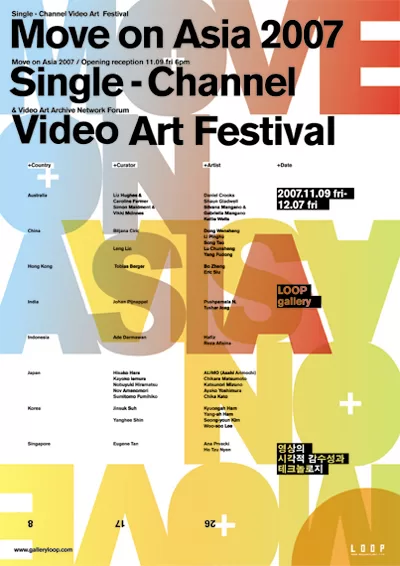Performance, Gesture, Ritual – Simon Maidment & Vikki McInnes
Published in Move on Asia 2007, Australian component curated by Vikki McInnes & Simon Maidment.
Artists, it seems, have generally been ahead of the curve in knowing that photography is not a transparent medium for the transmission of an action to a secondary audience, and have treated the photograph and video document with great circumspection. Clearly, performance art and photography are radically different mediums, but both define a non-ordinary space by imposing parameters on it — a space that depends on the viewer to make it come alive.
– Karen Irvine, Camera/Action: Performance and Photography, Museum of Contemporary Photography Chicago, 2004.
When Irvine talks of an audience making a space ’come alive’, she highlights one of the key inherent qualities of performance or live art as a medium – namely, the ‘liveness’ of the work and the context in which it’s presented. Indeed, often performance or live art aggressively resists documentation, with both form and meaning becoming lost in translation when it is thus captured. In her 1993 book Unmarked, Peggy Phelan went as far as to argue that the very definition of performance as a medium resides in its unreproducibility.
If we are to view single-channel video as a unique medium, we should note its difference from those media out of which it emerged, such as video installation, photography, and indeed performance. Works made as single channel video exploit certain formal and conceptual elements – temporality, editability, transportability, and accessible technologies – to create moments that become specific to it. Single-channel video differs from video installation, its close cousin, particularly in its transportability (something an exhibition like Move on Asia is predicated on) and the immersive nature of the latter, whereby video is navigated through a physical space. This lack of physicality in an audience’s engagement with single channel work, however, can lead to a danger of passive spectatorship.
It is true of the works we have selected for this year’s Move on Asia that in some sense they do not invite a participatory mode of spectatorship, and that the presentation of the works is removed from their enactment. However both employ the body – and action – to generate psychological spaces, with their own internal logic and temporality, that must be navigated,. They require something of the viewer, to unpack the logical framework of these singular actions, and to decode or interpret the new social cues that each inscribes. Each artist looks into the mirror, Wells at herself and both Mangano sisters at her twin. We in turn supply our own gaze back. In his 1999 book Liveness Philip Auslander wrote ‘Historically, the live is actually an effect of mediatization, not the other way around.’ If we view these works in this light, their relationship – and that of the medium – to performance art is one of cause and effect. The works’ performative, gestural, and ritualistic nature drags us back and forth over the divide between each, and foregrounds the impact they can have when used together.
Vikki McInnes and Simon Maidment – 2007.
